Share
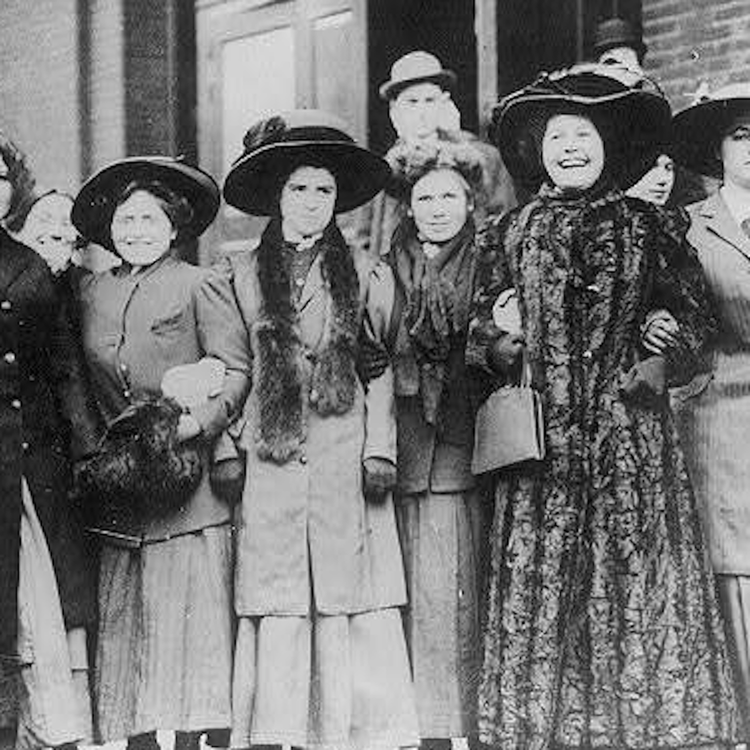
Irish History Podcast
The Triangle Shirtwaist Fire of 1911: An Emigrant's Experience
On March 25th 1911 a fire ripped through a sweatshop in Lower Manhattan where hundreds of immigrants worked long hours in dangerous conditions. The Triangle Shirtwaist Factory Fire would prove a pivotal moment not only in the history of New York but also the United States. This podcast, the first of three episodes on the fire, looks at the early lives of two women Annie Doherty and Celia Walker who worked in the factory. It explains why they emigrated to the US and had little option but to work in such dangerous conditions.
This is a joint project with Hope C Tarr, an author based in Manhattan. You can find Hope's website here or follow her on twitter.
Lots of you have been asking about the War of Independence series - that kicks off on February 1st!
Follow me on twitter.com/irishhistory
Become a supporter & access dozens of exclusive podcasts
Patreon www.patreon.com/irishpodcast
Acast https://plus.acast.com/s/irishhistory
📢June 2023 Update - New Walking Tour 📢
I am thrilled to announce my brand new walking tour in Ireland's oldest city, Waterford. Join me and explore 1,000 years of history from the Vikings to Cromwell & Strongbow to the Irish Revolution. Enhanced by wireless headsets 🎧 you will hear the sounds of the city through the ages and the words of the people who made history in Waterford. Tours take place each Saturday and places are strictly limited to 15 people. Book your place today at www.Irishhistorypodcast.ie/tours
*New Book: A Lethal Legacy - A History of Ireland in 18 Murders *
My new book A Lethal Legacy - A History of Ireland in 18 Murders is available for Pre-Order now. If you order your copy today at Easons and use the promo code FD10 you get a 10% discount
Easons https://www.easons.com/a-lethal-legacy-finbar-dwyer-9780008555993
Promo code FD10
More episodes
View all episodes
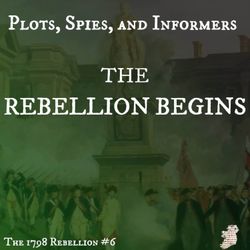
The Rebellion Begins: Plots, Spies, and Informers
44:20|In the early days of 1798, Dublin teetered on the edge of revolution. A shadow war raged between the United Irishmen and the British authorities, with the city’s fate hanging in the balance.This episode delves into the world of Edward Cooke, the spymaster at Dublin Castle, as he races to dismantle the revolutionary movement through a web of informers and secret agents. Meanwhile, leading rebels like Lord Edward Fitzgerald struggle to stay one step ahead, risking everything to keep the cause alive.As martial law is declared and terror sweeps across Ireland, the final days before the rebellion erupt into chaos, violence, and desperate gambles on both sides. Step into the heart of a city in crisis, where every shadow hides a secret and the first sparks of revolution are about to ignite.This is Episode 6 in my series on the 1798 Rebellion. The next installment, Part 7, will be available early and ad-free for show supporters next Monday week.Become a supporter today and get exclusive early and ad-free access at:Patreon: https://www.patreon.com/IrishpodcastSupercast: https://irishhistory.supercast.com/Written, narrated and produced by Fin DwyerSound: Kate DunleaAdditional Research: Stewart ReddinVoice Actors: Aidan Crowe & Therese MurrayContact me with your questions at info(at)Irishhistorypodcast(dot)ie.A list of sources for the 1798 Rebellion is available here: https://www.patreon.com/posts/138580354 (the post is not paywalled)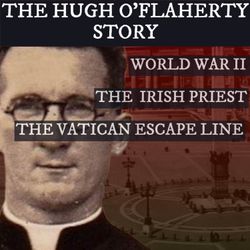
Hugh O’Flaherty & The Vatican Escape Line in World War II
01:12:29|This special episode of the Irish History Podcast is made in partnership with An Post.In Nazi-occupied Rome, the Irish priest Hugh O’Flaherty risked everything to save thousands from certain death. By running a secret escape line, O’Flaherty became a lifeline for those facing persecution so much so that he became a wanted man by the Gestapo.Despite the danger, he managed to save thousands from the Nazis.In this episode, I share his remarkable story, with insights from novelist Joseph O’Connor, author of the Rome Escape Line Trilogy, Jerry O’Grady of the Hugh O’Flaherty Memorial Society, and filmmaker and O'Flaherty's grandniece, Catherine O’Flaherty.To mark Monsignor Hugh O’Flaherty’s extraordinary life, An Post, Ireland's Postal Service, has released a new commemorative stamp and First Day Cover. They are available at anpost.com/shop or at selected post offices.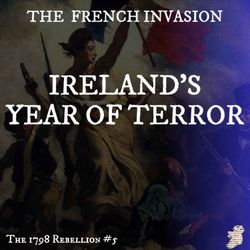
The French Invasion: Ireland’s Year of Terror?
39:18|This episode covers one of the most famous events in our history. It’s part of the 1798 Rebellion series, but you can dive straight in if you don't want the gripping backstory!In the closing months of 1796, Ireland was gripped by fear and uncertainty. This episode sees an invasion force of battle-hardened French veterans arrive off the Irish coast, inspiring hope and fear in equal measure.Meanwhile, a brutal campaign of repression sweeps Ulster as the British authorities unleash state terror on the revolutionary movement during a campaign known as the Disarming of the North.This episode also marks the first major violence between Crown forces and the wider populace.This is Episode 5 in my series on the 1798 Rebellion. The next instalment, Part 6, will be available early and ad-free for show supporters next Monday.Become a supporter today and get exclusive early and ad-free access at:Patreon: https://www.patreon.com/IrishpodcastSupercast: https://irishhistory.supercast.com/Written, narrated and produced by Fin DwyerSound: Kate DunleaAdditional Research: Stewart ReddinVoice Actors: Aidan Crowe & Therese MurrayContact me with your questions at info(at)Irishhistorypodcast(dot)ie.A list of sources for the 1798 Rebellion is available here: https://www.patreon.com/posts/138580354 (the post is not paywalled)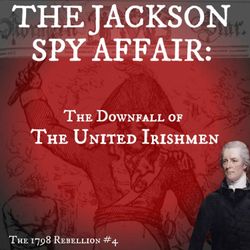
The Jackson Spy Affair: The Downfall of the Society of United Irishmen
38:50|This episode returns to the story of the 1798 Rebellion, but also stands alone as its own story.In 1793, war broke out between the British Empire and Revolutionary France. This episode explores what happened when a French spy, William Jackson, is caught in Ireland. After his capture, the authorities learned that Irish radicals in the Society of United Irishmen were in contact with Britain’s enemy, Revolutionary France.In this episode how the dramatic fallout pushed Ireland to the brink of rebellion. As sectarian violence and government repression escalate, Irish society polarises and radicalises at a breathtaking pace...This podcast launches my series on the 1798 Rebellion. The next instalment, Part 2, will be available early and ad-free for show supporters next Monday.Become a supporter today and get exclusive early and ad-free access at:Patreon: https://www.patreon.com/IrishpodcastSupercast: https://irishhistory.supercast.com/Written, narrated and produced by Fin DwyerSound: Kate DunleaAdditional Research: Stewart ReddinVoice Actors: Aidan Crowe & Therese Murray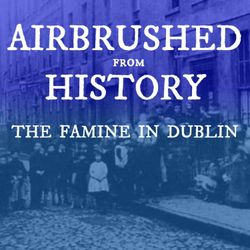
Airbrushed from History: The Great Hunger in Dublin
32:00|This week, we’re taking a break from our series on the 1798 Rebellion for a fascinating conversation about the Great Famine in Dublin and why this key chapter in the city’s history has been largely forgotten.When most people think of the Great Hunger, they picture rural Ireland and the suffering along the Atlantic coast. For years, it was widely believed that Dublin escaped the worst of the Famine. But is that really the case?In this episode, I’m joined by Dublin historian Maria Ball, who shares her unique insights into how the Famine impacted the capital and why its story has faded from memory. Drawing on her own family’s history in the Smithfield tenements, Maria reveals the hidden struggles faced by Dubliners during the 1840s. She also explains how institutions like the city workhouses and the Lock Hospital (which treated venereal disease) were overwhelmed during the crisis.Maria is also involved in organising a history festival in Cabra this week - you can find out more here.Sound by Kate Dunlea.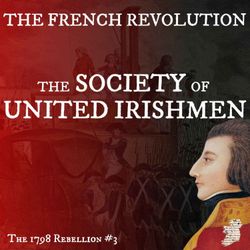
The French Revolution & the Society of United Irishmen
44:30|While this episode fits into a bigger series on the 1798 Rebellion, it’s also designed to stand on its own.The French Revolution of 1789 electrified Ireland, inspiring hope and fear in equal measure. It would lead to the establishment of Ireland’s republican movement in 1791.Exploring the profound impact of the revolution in Ireland, this episode opens with the dramatic story of Henry Edgeworth, an Irish priest living in Paris, who would participate in one of the most famous executions of the revolution - an event with profound effects at home in Ireland.We then explore how the spread of revolutionary ideas led to the foundation of the Society of United Irishmen, who would spearhead Ireland’s revolution in 1798. As old certainties crumble, Ireland stood on the brink of a new, exciting but dangerous age.This is Episode 3 in my series on the 1798 Rebellion. The next instalment, Part 4, will be available early and ad-free for show supporters next Monday week.Become a supporter today and get exclusive early and ad-free access at:Patreon: https://www.patreon.com/IrishpodcastSupercast: https://irishhistory.supercast.com/Written, narrated and produced by Fin DwyerSound: Kate DunleaAdditional Research: Stewart ReddinVoice Actors: Aidan Crowe & Therese MurrayContact me with your questions at info(at)Irishhistorypodcast(dot)ie.A list of sources for the 1798 Rebellion is available here: https://www.patreon.com/posts/138580354 (the post is not paywalled)
The Rising Storm: The American War of Independence & Ireland
43:00|This episode is part of a wider series on the 1798 Rebellion, but you can enjoy it as a stand-alone story.When the American Revolution broke out in the 1770s, it sent shock waves across the Atlantic, transforming Irish politics and society. To explore this enthralling story the episode begins with the arrival of Benjamin Franklin in Dublin - a visit that would have unexpected consequences for Ireland’s future.We explore how revolutionary ideas, economic hardship, and the threat of invasion combined to spark new demands for change in Ireland. The episode goes on to trace Ben the rise of the Patriot movement and the revolution of 1782, as Irish society starts to cleave apart.This is Episode 2 in my series on the 1798 Rebellion. The next installment, Part 3, will be available early and ad-free for show supporters next Monday.Become a supporter today and get exclusive early and ad-free access at:Patreon: https://www.patreon.com/IrishpodcastSupercast: https://irishhistory.supercast.com/Written, narrated and produced by Fin DwyerSound: Kate DunleaAdditional Research: Stewart ReddinVoice Actors: Aidan Crowe & Therese MurrayContact me with your questions at info(at)Irishhistorypodcast(dot)ie.A list of sources for the 1798 Rebellion is available here: https://www.patreon.com/posts/138580354 (the post is not paywalled)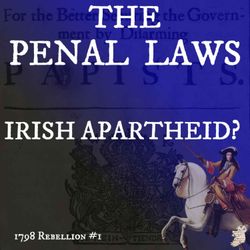
The Penal Laws: An Irish Apartheid?
47:19|This podcast opens a broader series on the 1798 Rebellion, but also works as a stand alone episode.For over a century, Irish Catholics and Presbyterians were subjected to the Penal Laws. Although the vast majority of the population, they were banned from voting, sitting in parliament, bearing weapons, and entering many professions—the list goes on.This episode explores the deeply unequal society these laws created. By following the life of Emily Fitzgerald, who moved to Ireland in 1747, we gain a unique insight into this world. I explain how the Penal Laws emerged after a century of warfare, how Catholics resisted their brutal treatment, and how these laws created a deeply unequal and unstable society.To find our feet in this world, we begin in the harrowing winter of 1740, which led to the Year of Slaughter—the worst famine in Irish history.This podcast launches my series on the 1798 Rebellion. The next instalment, Part 2, will be available early and ad-free for show supporters next Monday.Become a supporter today and get exclusive early and ad-free access at:Patreon: https://www.patreon.com/IrishpodcastSupercast: https://irishhistory.supercast.com/Sound: Kate DunleaAdditional Research: Stewart ReddinVoice Actors: Aidan Crowe & Therese MurrayA list of sources for the 1798 Rebellion is available here: https://www.patreon.com/posts/138580354 (the post is not paywalled)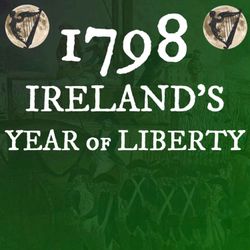
1798: The Year Ireland Changed Forever
06:00|The 1790s remain one of the most important decades in modern Irish history. After years of rising tensions, the island was rocked by the 1798 Rebellion—the largest uprising in Irish history. In just a few months, more people perished than in all the conflicts of the 20th century combined.These events continue to cast a long shadow over life in Ireland and are central to understanding this island in the 21st century. In many ways, 1798 is our foundational story. So much of what followed from the War of Independence to the Troubles sought to answer questions first posed by Ireland’s revolutionary generation of the 1790s. What does it mean to be Irish? Why is our history so deeply divided along religious lines? And what lies at the heart of the bitterness that has marked modern Anglo-Irish relations?In my gripping new series, starting next week, I’ll take you deep into life in 18th-century Ireland and uncover the dramatic story of the 1798 Rebellion. Through the gripping narratives of people who lived through these remarkable events, we’ll explore the anti-Catholic Penal Laws, the impact of the American and French Revolutions, and how Ireland’s republican movement emerged in the 1790s.It’s a story dominated by larger-than-life characters from the great-grandson of an English king who became Ireland’s leading revolutionary, to the spies and agents who betrayed friends and comrades. The series navigates global revolutions and the brutal realities of war and sectarianism in Ireland.Whether you’re new to Irish history or searching for fresh insights, this series brings the drama, the characters, and the high stakes of the 1790s to life. Join me as we uncover how the 1798 Rebellion changed Ireland forever.